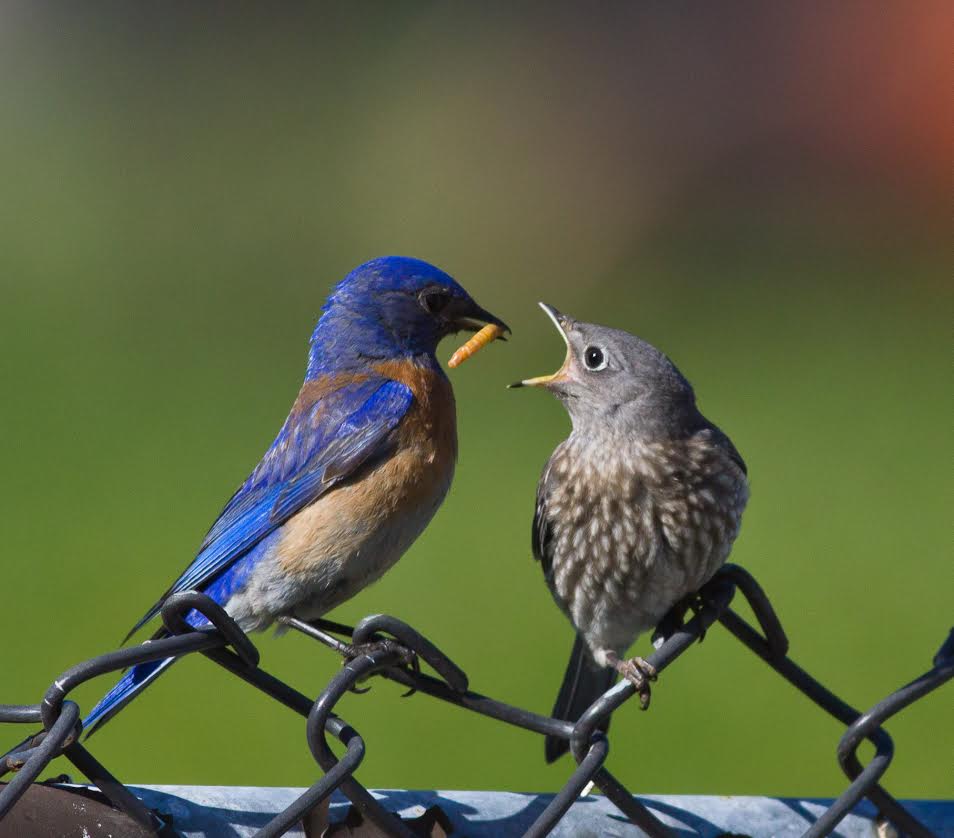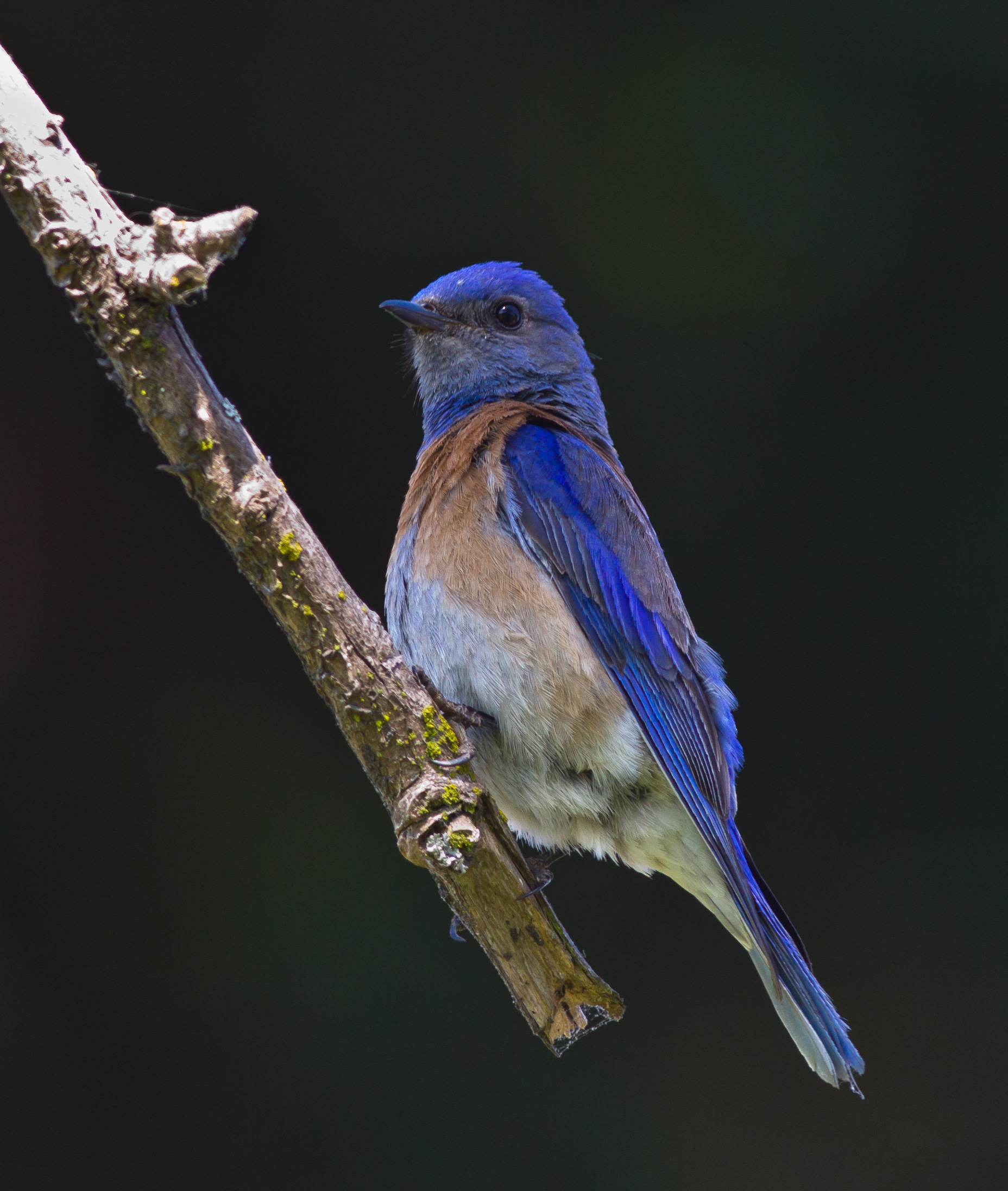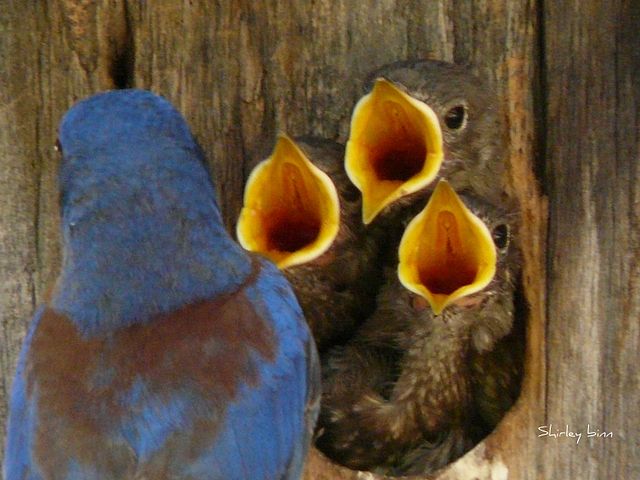
With a flash of brilliant blue wings, the Western bluebird arrives, swooping to the ground to scrounge insects. Taking flight, it heads toward a wooden nest box on a pole, where hungry hatchlings wait for their meal.
Bluebird populations were once in steep decline. Widespread use of DDT in the mid-20th century reduced populations of insects, one of the bluebirds’ primary food sources. And introduced bird species drove bluebirds from choice nesting spaces.
As cavity nesters, bluebirds can’t drill their own nesting holes, and rely on abandoned woodpecker nests. But non-native starlings and house sparrows out-competed them for nest space in suitable trees. Bluebirds were listed as Species of Special Concern on the Audubon Society’s Watch List in the 1970s and ’80s.

All three bluebird species — the Mountain, the Eastern and the Western — are found only in North America. Their populations are growing largely because volunteers from bluebird clubs and societies are dedicated to building, installing, and monitoring bluebird nest boxes. National Geographic credits one man with doing significant work to help to bring the Eastern bluebird back from extinction.
“Bluebirders” adopt areas, called Bluebird Trails, to install nesting boxes specially designed to exclude non-native starlings and house sparrows as well as discourage predators. They monitor and report the number of eggs, hatchlings and fledglings.
